Each of China's Five-Year plans (FYP) signal the government's vision for future reforms for all fields, with the defense field being no exception.
This year is the end of the 13th Five-Year plan (2016-2020). It aims at breaking down systematic, structural, and policy barriers, modernizing the organization of the military and improving combat capacity, the 13th FYP called for completing national defense and armed forces reforms by 2020.
Troops make preparation for a military parade at Zhurihe training base in north China's Inner Mongolia Autonomous Region, July 30, 2017. /Xinhua
In retrospect, like the 13th FYP, each FYP has set targets and tasks for national defense, mapping out the blueprint for the country's military development.
One principle runs through it all. China's defense development serves the demands of national development, security and military strategies, and takes both the actual condition and long-term development needs into account.
Defensive in nature
The third FYP (1966-1970) is the only FYP that made national defense as a priority.
In the 1960s, the open split began to develop between two big powers: the Soviet Union and the U.S. The U.S. entered the Vietnam War while Sino-Soviet relations began to deteriorate in the 1960s.
In the light of a possible big war, the third FYP said the country should actively prepare for conflicts and speed up construction in three key areas: national defence, science and technology, and industry and transport infrastructure.
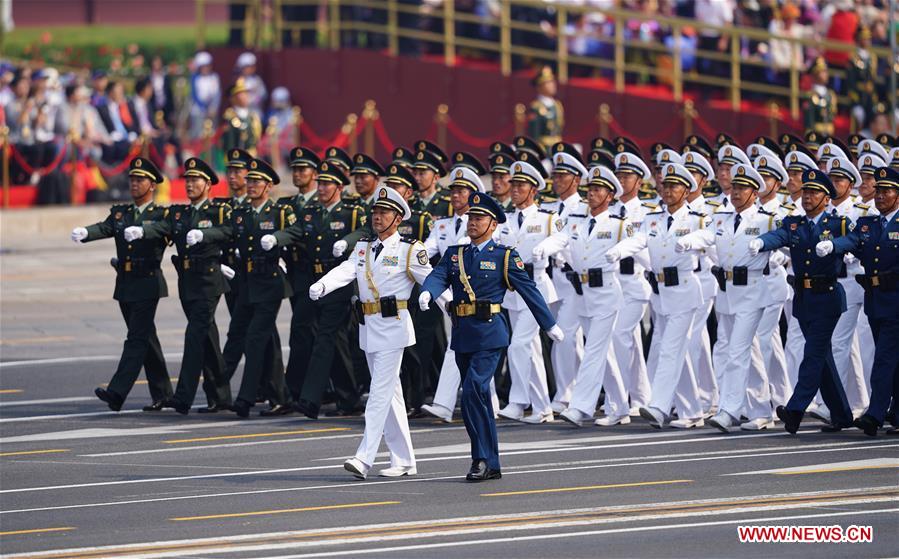
A phalanx of the Chinese People's Liberation Army officers marches in a parade during the celebrations marking the 70th anniversary of the founding of the People's Republic of China (PRC) in Beijing, capital of China, October 1, 2019. /Xinhua
Speed up military science research
The eighth FYP (1991-1995) made a call to speed up military science research to improve self-designed capabilities.
According to the eighth FYP, the country would strengthen major work on the development of new weapons and equipment and further adjust the structure of the national defense industry.
For the first time, the FYP promoted military enterprises to manufacture more civilian products with advanced technologies.
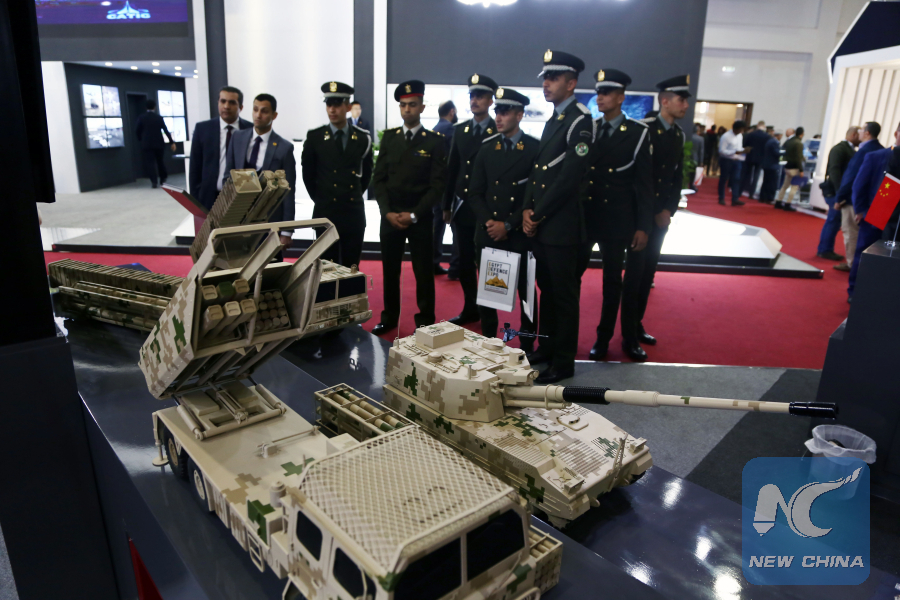
People visit the exhibition pavilion of China's defense industry company NORINCO at the Egypt Defense Expo in Cairo, Egypt, on December 4, 2018. /Xinhua
Advance defense and military modernization
Regarding defense modernization as a key part for realizing socialist modernization, since the ninth FYP (1996-2000), China has showed firm determination in modernizing its defense forces.
The ninth FYP said modernization of national defense is the basic guarantee of the nation's safety and economic construction.
Saying the building of army is principal part of defense construction, the tenth FYP stressed to advance the transformation, modernization and nomination of People's Liberation Army (PLA) building.
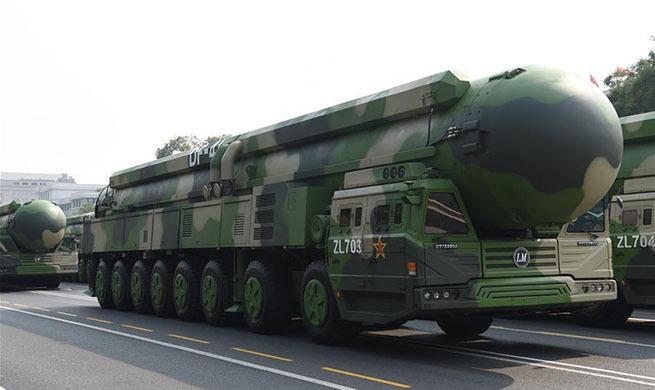
Dongfeng-41 intercontinental strategic nuclear missiles are reviewed in a grand military parade celebrating the 70th anniversary of the founding of the People's Republic of China in Beijing, capital of China, October 1, 2019. /Xinhua
The 11th FYP (2006-2010) noted that defense modernization should fulfill the requirements of national security and development interests and be in step with national economic development.
According to the 13th FYP (2016-2020), to keep pace with the country's modernization, China is focusing on building a fortified national defense and a strong military commensurate with the country's international standing and national security and development interests.
It also noted the Chinese-style modern armed forces will be capable of successfully engaging in information technology based warfare and take an active role in international peacekeeping missions.

Chinese peacekeeping troops, the last detachment of the country's first deployment of a full infantry battalion for a UN peacekeeping mission, arrive at Juba International Airport, April 8, 2015. /VCG
Deepen military civilization integration
The strategy of military-civilian integration development was first proposed in the 12th FYP (2011-2015).
According to the FYP, the strategy aims to effectively integrate military and local resources and promote a coordinated development of national defense and economy and society.
The 13th FYP gave detailed guidelines on how to promote deep development of civil-military integration and introduced more measures in administration, defense science, technology and industry areas.
The plan said the country will establish bodies for integrating military and civilian development in national level and provincial level, advance legislation related to the issues and explore the establishment of a mechanism for funding integrated military-civilian development projects.
It also said the country will guide private business with a competitive advantage in entering the fields of research and development, production, and maintenance of military products.
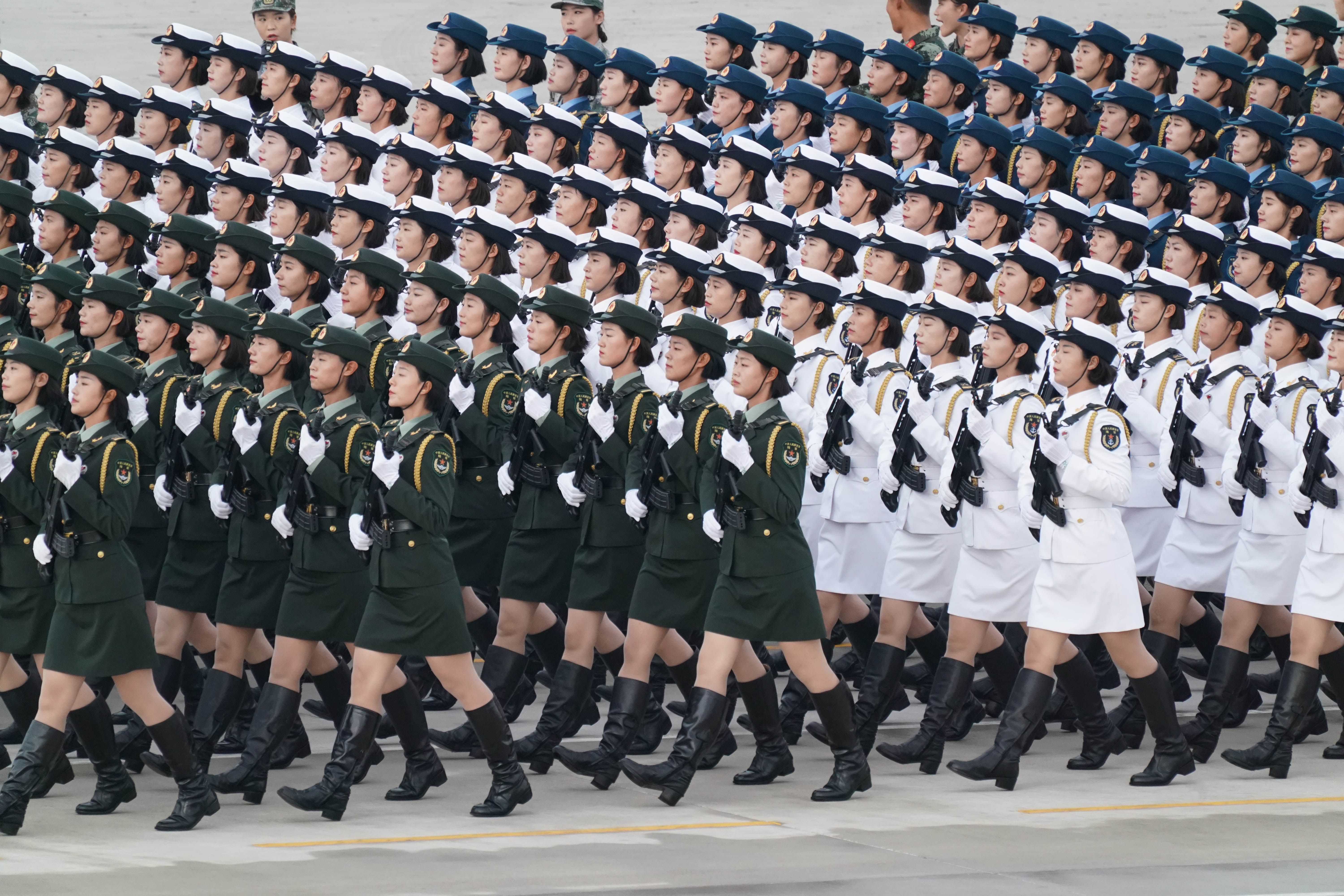
Chinese soldiers take part in parade training for the upcoming National Day celebrations in Beijing, capital of China, September 11, 2019. /Xinhua
Reasonable, appropriate defense expenditure
China reduced its national defense spending in the first FYP (1953-1957) period after the War to Resist U.S. Aggression and Aid Korea in 1953.
Controlling national defense spending was explicitly stated in the seventh FYP (1986-1990).
The ninth FYP (1996-2000) also noted national defense construction must be carried out on the basis of economic construction and conform to the overall situation of national economic construction.
Since the sixth FYP period (1981-1985), China's defense expenditure has grown in tandem with the growth of the national economy and government expenditure, but its proportion of GDP shows a clear downward trend.
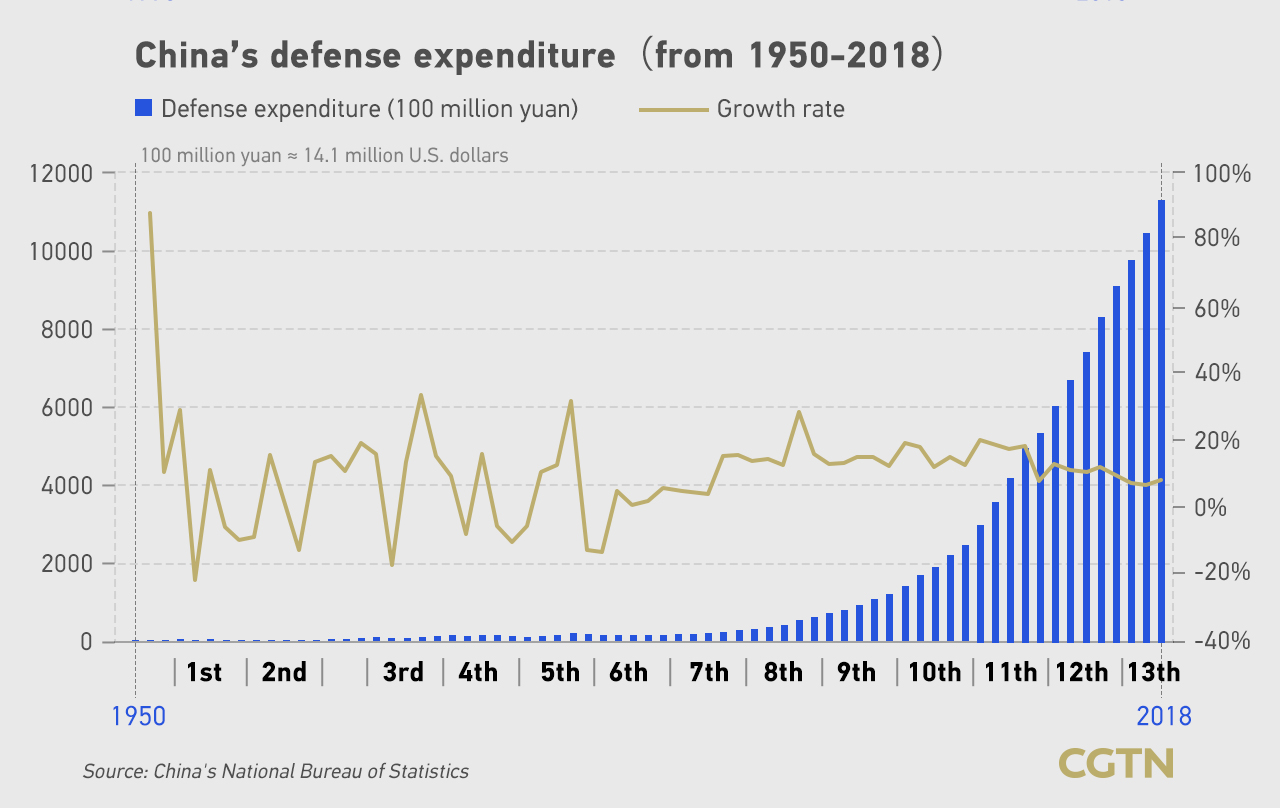
The defense budget growth rate remains single digit for past four successive years following five consecutive year of double-digit increase: the rate stood at 7.5 percent in 2019, 8.1 percent in 2018, seven percent in 2017, and 7.6 percent in 2016.
Defense expenditure as a percentage of gross domestic product (GDP) has fallen from a peak of 5.43 percent in 1979 to 1.25 percent in 2018. It has remained below 2 percent since the beginning of the 7th FYP in 1986.
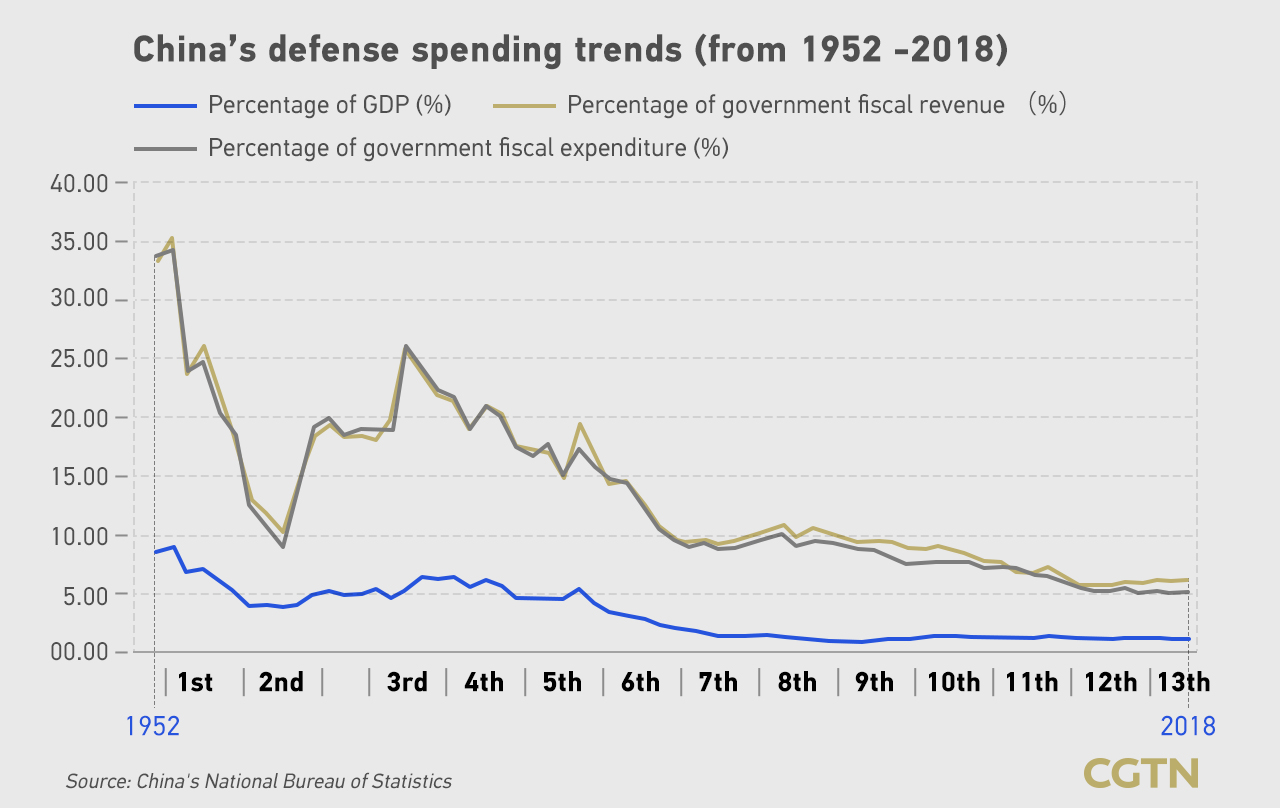
For comparison, the percentage of GDP is about 3.5 percent of the United States, 4.4 percent of Russia, 2.5 percent of India, 2.0 percent of the United Kingdom (UK), 2.3 percent of France, 1.2 percent of Germany, and 1.0 percent of Japan.
Defense expenditure as a percentage of government expenditure was 17.37 percent in 1979 and 5.11 percent in 2018, a drop of more than 12 percentage points in past four decades, showing a clear downward trend.
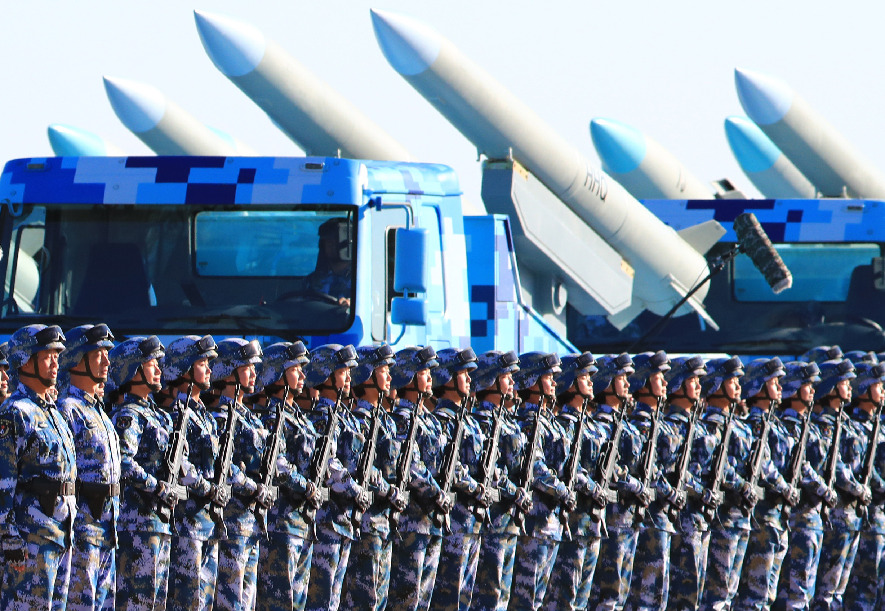
No comments:
Post a Comment